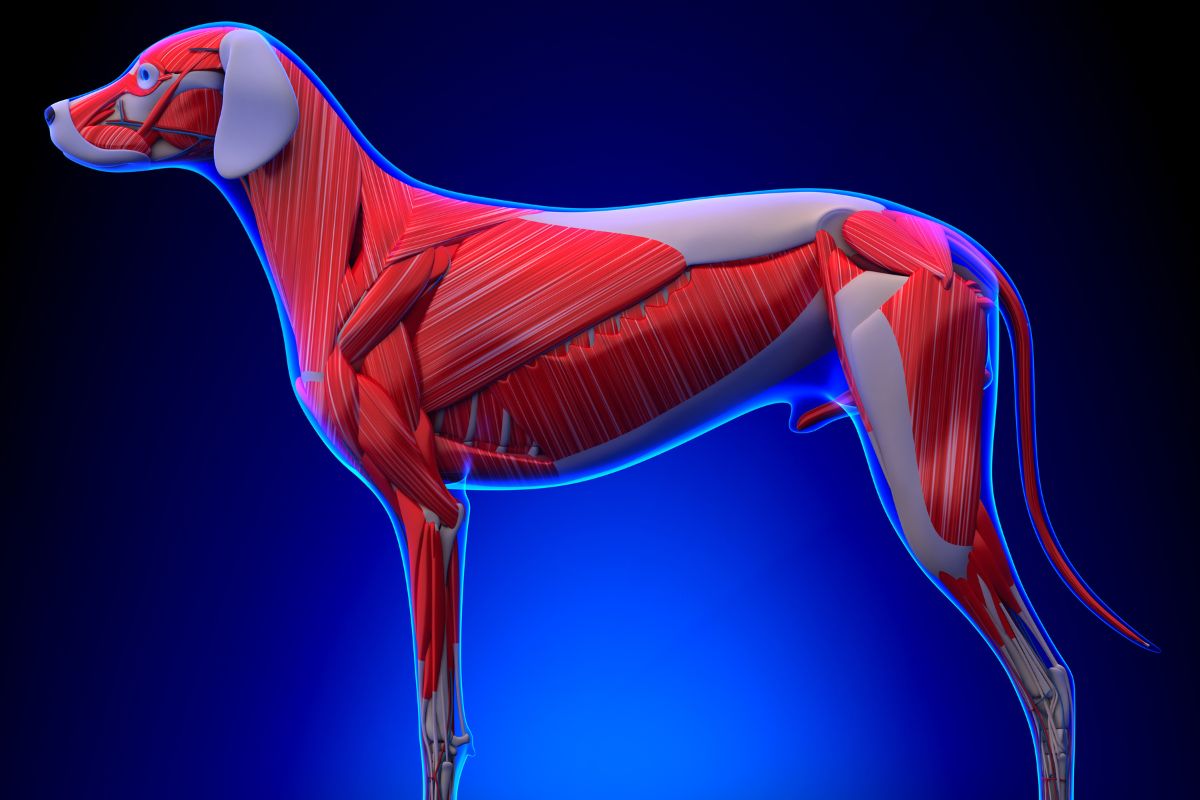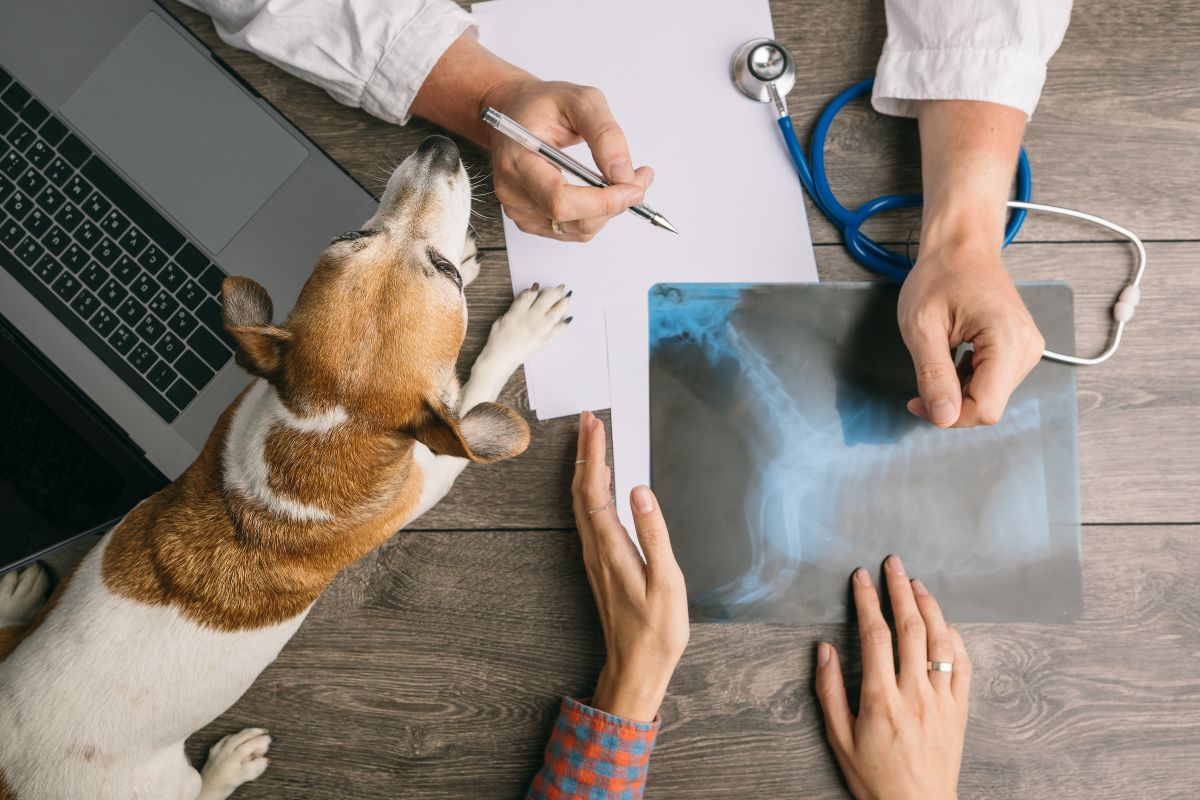What is Applied Anatomy?
Anatomy studies cell, tissue, and organism structure. Applied anatomy examines structure-function relationships in diagnostic imaging, pathology, and medicine. It applies anatomic knowledge to clinical problems, such as diagnosis and treatment, or surgical solutions to disease processes.
Applied anatomy/clinical anatomy is key to diagnosing diseases. Clinical anatomy provides precise information about a disease’s system and organs.
















Bookshelf Must-Have in Applied Anatomy
King's Applied Anatomy of the Central Nervous System of Domestic Mammals 2nd Edition
By George Skerrit
About This Book
Suppose you have no prior understanding of the central nervous system. In that case, King’s Applied Anatomy of the Central Nervous System of Domestic Mammals, Second Edition is the perfect book to start learning about.
Readers can easily appreciate the key principles of the central nervous system, how it operates, and how to recognize damaged components since the information is logical and understandable. This text takes a novel approach by combining descriptive anatomy and clinical neurology.
It explains the structure and function of the central nervous system while emphasizing its application to clinical practice. This second edition has been revised to cover the most recent clinical discoveries. It also includes new material on electrodiagnostic procedures, stem cell transplantation, and sophisticated imaging.
In addition, the book comes with a website that serves as a companion, and on it, you will find self-assessment questions, name the diagram tasks, and downloadable figures to assist with additional study.
King’s Applied Anatomy of the Central Nervous System of Domestic Mammals, Second Edition, is an excellent introductory text for veterinary students. It is also an invaluable reference for trainee veterinary neurology specialists and veterinary practitioners who have a particular interest in neurology.
Book Details
Publisher: Wiley-Blackwell; 2nd edition (February 5, 2018)
Language: English
Formats: Paperback, kindle
Paperback: 400 pages
Item weight: 1.77 pounds (0.8 kilograms)
Dimensions: 6.7 x 0.8 x 9.6 inches (17.02 x 2.03 x 24.4 centimeters)
You will discover that the book addresses a wide range of contemporary concerns, some of which are as follows, among others:
- Supply of arteries to the central nervous system 1.
- Supply of arteries to the brain, part 1.
- The meninges and the fluid within the cerebrospinal canal.
- Drainage of the venous system in the brain and spinal cord.
- The venous sinuses found in the cranial system.
- The venous drainage of the neuraxis and its significance in clinical practice.
- The practical aspects of studying the anatomy of the vertebral canal.
- The structure and function of the epidural space and the lumbar puncture.
- The intervertebral disc: its structure and function.
- The neuronal cell.
- The impulse from the nerves.
- The centers of activity in the cranial nerves.
- When it comes to clinical neurology, the nuclei of the cranial nerves are extremely important.
- Medial lemniscal system.
- Modalities of conscious perception, as well as their receptors and pathways.
- The exceptional sensations.
- Spinocerebellar pathways and the formation of the ascending reticulum.
- Neurons that are efferent to the soma.
- Extrapyramidal system.
- Motor centers.
- Feedback from the extrapyramidal system and disorders of the upper motor neurons.
- The feedforward mechanism of the extrapyramidal system.
- A condensed overview of the somatic motor systems.
- You can find the neuraxis’s motor components here.
- Components of the central nervous system responsible for autonomy.
- The neocortex and the hippocampal region.
- Both the thalamus and the cerebral cortex.
- Cerebral cortex.
- The study of embryology concerning comparative neuroanatomy.
- The embryological development of the nervous system in the brain and spinal cord.
- Neurology in a clinical setting.
- Imaging methods applied to the investigation of the central nervous system.
- Anatomy of the central nervous system from a topographic perspective.
- The overall framework.
King's Applied Anatomy of the Abdomen and Pelvis of Domestic Mammals 1st Edition, Kindle Edition
By Geoff Skerritt
About This Book
The PDF version of King’s Applied Anatomy of the Abdomen and Pelvis of Domestic Mammals is a comprehensive and easily understandable investigation of domestic animals’ abdominal and pelvic anatomy presented therapeutically relevant.
This refresher is for veterinary students beginning to engage in clinical operations. It uses clinical illustration to teach the key principles of the creation of the abdomen and pelvis of domestic mammals.
- Comprehensive explanations of the body wall, the mesenteries, the abdomen and pelvis ligaments, and the digestive system. Investigations into the liver, pancreas, spleen, abdominal cavity lymphatics, and digestion biology.
- In-depth analyses of the abdominal and pelvic regions’ autonomic and somatic nerves and the male and female reproductive organs are present here.
- Surgical procedures, including laparotomy and imaging diagnostics of the abdomen and pelvis. The King’s Applied Anatomy of the Abdomen and Pelvis of the Domestic Mammals is an excellent resource for veterinary students studying anatomy. It will also be helpful to work with veterinarians, students of veterinary nursing, and those researching animal science and allied areas.
Despite this, the book will provide an in-depth discussion that touches on the following topics:
- Defining the boundaries of the gastrointestinal function within the abdomen.
- The lower part of the GI tract.
- The length of the large intestine.
- The liver, as well as the pancreas.
- Lymphatics and the functions of the spleen.
- The nerves that are in the abdomen and the pelvis.
- The ovaries and the bursae of the ovaries.
- The vagina, the vestibule, the uterine tube, and the uterus.
- The penis of mammalian organisms.
- These are the testicles.
- The glands of a sexual auxiliary function.
- Imaging of the abdomen for diagnostic purposes.
eBook Features
- Highlight, search, and take notes in the book.
- Page numbers are similar to the physical edition.
- Length:154 pages.
- Enhanced typesetting: enabled.
- Page flip: enabled.
- Due to its large file size, downloading this book may take longer.
Book Details
Publisher: Wiley-Blackwell; 1st edition (February 9, 2022)
Publication date: February 9, 2022
Language: English
Format: Kindle, paperback
File size: 14860 KB
Simultaneous device usage: Up to 3 simultaneous devices, per publisher limits
Text-to-Speech: Enabled
Screen reader: Supported
Enhanced typesetting: Enabled
X-Ray: Not enabled
Word wise: Not enabled
Print length: 154 pages
Lending: Not enabled
Veterinary Physiology and Applied Anatomy: A Textbook for Veterinary Nurses and Technicians 1st Edition
By CAW, Louise Tartaglia BSc(Hons) MSc, Anne Waugh MSc CertEd SRN RNT FHEA
About This Book
Every student in the professions of veterinary medicine, veterinary nursing, and veterinary technology should have a fundamental comprehension of the anatomy and physiology of small animals. This is a prerequisite for all three of these fields. There is not a single textbook that explains this topic in a way that is simple enough to grasp.
A significant new publication on the anatomy and physiology of tiny animals. Case studies titled “In Practice” are in use to link the science of fundamental physiology to clinical practice. The student receives a user-friendly text with easy access, thanks to the abundant use of illustrations throughout the sections. Among the many issues discussed are the following:
- The fundamentals of what makes living matter tick.
- Control and coordination of efforts.
- Encouragement and forward motion.
- Transport.
- Obtaining minerals while also removing waste products.
- Survival, development, and defense.
Book Details
Publisher: Butterworth-Heinemann; 1st edition (June 5, 2002)
Language: English
Format: Paperback
Paperback: 192 pages
Item Weight: 1.39 pounds (0.63 kilograms)
Dimensions: 7.25 x 0.5 x 9.25 inches (18.4 x 12.7 x 23.5 centimeters)
Zoology Coloring Book: Incredibly Detailed Self-Test Animal Anatomy Color workbook | Perfect Gift for Veterinary Students and Animal Lovers Paperback – November 29, 2020
By Anatomy Academy
About This Book
The most efficient method for learning the structure and functions of zoological anatomy is to color animal physiology and its systems. When you color in the Zoology Coloring Book pages, you not only have fun but also take in new information and develop new visual connections with essential vocabulary.
Let this book serve as a guide for you if you are currently in a course on zoology or if you are simply interested in animals and their anatomy. Our book is for quick self-testing by offering the answer keys on the back of the same page, whereas other books give you the anatomy terminology right away.
As a result, you may get the most out of your studies and make the most of your time studying. You won’t have to worry about bleed-through thanks to the detailed pictures of the animal’s anatomical systems on a large page, sans drawings placed back-to-back.
The Zoology Coloring Book features:
- The most efficient method for rapidly expanding your knowledge of the anatomy of animals, all while having a good time doing it.
- Comprehensive coverage of the principal body systems of animals to provide context and reinforce visual recognition.
- More than twenty-five original drawings of various animals that are simple to color and include the terminology pertaining to their anatomy.
- Large paper measuring 8.5 inches by 11 inches with a single side, allowing for easy removal of coloring.
- self-testing for each illustration, with answer keys conveniently located on the same page as the quizzes.
- Learn about the anatomy of various animals, including the rhino, lion, hippo, kangaroo, bison, sloth, whale, ant-eater, lizard, pelican, and zebra as other species.
Discover the anatomy of the following animals:
- Rhino
- Lion
- Hippo
- Kangaroo
- Bison
- Sloth
- Whale
- Ant-Eater
- Lizard
- Pelican
- Zebra
The traditional method calls for long hours of reading and cramming, which will, in the long run, result in an information overload and a mental block, causing you to waste most of your valuable time. Even if you have a passion for learning, it won’t be easy to memorize everything by simply reading your old textbook or rewriting those terms repeatedly.
This is true even if you enjoy studying. If you push yourself too hard to remember everything you need, you will only end up exhausted and stressed out, leading to serious health issues in the long run.
Engaging in some fun and mentally stimulating activities while simultaneously storing more information than you ever believed possible is a significantly better solution than trying to find a way to save time and avoid aggravation. In Animal Anatomy Coloring Book, you’ll discover
- 43 anatomical images depicting the skeletal, muscular, and external anatomy of 13 distinct animals.
- Crystal clear numbered arrows pointing exactly to specific body parts — so you can mark them yourself and check your responses when ready.
- A simple-to-navigate answer sheet on every other page for quick and easy reference.
- Key anatomical terminology you need to know as a pre-vet (or someone who wants to learn more about the wonderful anatomy of our animal pals) (or someone who wants to learn more about the fascinating anatomy of our animal friends).
- A unique approach to retaining more information in both your short-term and long-term memory through the use of an interactive visual tool.
- A proven approach to being calm and fulfilled as you study one of the hardest disciplines in veterinary medicine.
- A downloaded digital copy for you to use in any way you desire.
In addition to that:
- In contrast to other coloring books on veterinary anatomy, Animal Anatomy Coloring Book is on a surface you can color on rather than on glossy paper.
- And in contrast to other study guides, it offers a completely immersive and interesting experience even as you prepare for important exams and work to remember information that will be essential to the success of your professional endeavors.
- You don’t need to stress remembering vocabulary; you only need a multi-channel approach to review, which is exactly what you’re about to get here. Goodbye, worries about forgetting words!
- Scroll up and click the “Add to Cart” button as soon as possible if you want to improve your photographic memory while also having a good time with this activity.
Book Details
Publisher: Muze Publishing (November 29, 2020)
Language: English
Format: Paperback
Paperback: 56 pages
Item Weight: 5.6 ounces (158.8 grams)
Dimensions: 8.5 x 0.13 x 11 inches (21.6 x 0.33 x 27.94 centimeters)
Anatomical Technology as Applied to the Domestic Cat; An Introduction to Human, Veterinary, and Comparative Anatomy.. Paperback – January 28, 2013
By Wilder Burt G. 1841-1925
About This Book
Unlike some other reproductions of classic texts, (1) We have not used OCR(Optical Character Recognition), as this leads to bad quality books with introduced typos. (2) In books where there are images such as portraits, maps, sketches, etc. We have endeavored to keep the quality of these images, so they accurately represent the original artifact.
Although occasionally, there may be certain imperfections with these old texts, we feel they deserve to be available for future generations to enjoy.
Book Details
Publisher: HardPress Publishing (January 28, 2013)
Language: English
Format: Kindle, paperback, hardcover
Paperback: 630 pages
Item Weight: 1.83 pounds (0.83 kilograms)
Dimensions: 5.98 x 1.27 x 9.02 inches (15.2 x 3.2 x 22.9 centimeters)
Veterinary Anatomy of Domestic Animals: Textbook and Colour Atlas 7th, updated and extended edition
By Horst Erich König (Editor), Hans-Georg Liebich (Editor)
About This Book
The days of cramming dry anatomical facts are over. It’s time to look at anatomy as an opportunity to appreciate a fascinating world of relationships and interconnections.
Featuring:
- The complete spectrum of systematic and topographic anatomy.
- Clearly structured and vividly presented, featuring superb high-quality images.
- A combined text and atlas: considers a variety of species, an ideal resource for developing a comprehensive understanding of anatomical structures and relationships.
- Integrated sectional anatomy and contemporary diagnostic imaging: a window into the application of anatomy in diagnostics.
- Highlights you won’t want to miss.
- A new chapter on avian anatomy: the fundamental structural features of birds, at a glance.
- Over 1100 exceptional images: anatomical specimens and histological images, thin slice plastination, color schematics, diagnostic imaging, and sectional anatomy.
- Numerous references to clinical and applied anatomy: including equine endoscopy, arthrocentesis, examination of the udder, rectal examination, and laparotomy.
- A unique bonus: CT, MRI, and ultrasonographic images.
The following topics have been adequately covered in this book:
- Introduction and general anatomy.
- Axial skeleton (skeleton axiale).
- Fasciae and muscles of the head, neck, and trunk.
- Forelimbs or thoracic limbs (membra thoracica).
- Hindlimbs or pelvic limbs (membra pelvina)
- Statics and dynamics.
- Body cavities.
- Digestive system (apparatus digestorius).
- Respiratory system (apparatus respiratorius).
- Urinary system (organa urinaria).
- Male genital organs (organa genitalia masculina).
- Female genital organs (organa genitalia feminina).
- Organs of the cardiovascular system (systema cardiovasculare).
- Immune system and lymphatic organs (organa lymphopoetica).
- Nervous system (systema nervosum).
- Endocrine glands (glandulae endocrinae).
- Eye (organum visus).
- Vestibulocochlear organ (organum vestibulocochleare).
- Common integument (integumentum commune).
- Topographical-clinical anatomy.
- Avian anatomy.
- Sectional anatomy and imaging processes.
Book Details
Publisher: Thieme; 7th, updated and extended edition (February 28, 2020)
Language: English
Format: Hardcover, etextbook
Hardcover: 864 pages
Item Weight: 7.3 pounds (3.31 kilograms)
Dimensions: 9.4 x 1.7 x 12.4 inches (23.9 x 4.3 x 31.5 centimeters)
FAQ on Applied Anatomy
What are the Implications of Applied Anatomy for Animals?
Anatomy studies the inside structure of living organisms, including humans and other animals. This covers information about the nervous system, the skeleton, the organs, and the blood arteries.
Why is Anatomical Knowledge so Crucial in Veterinary Medicine?
Knowing an animal’s anatomy also enables us to spot any anomalies present in that animal. By seeing radiographs (x-rays) of the animal or by palpating it (physically inspecting it), we will be able to determine whether or not a certain anatomical feature is not functioning as it should.
Why is Anatomy Important in Animals
You will understand how to detect sickness due to this. Identify whether or not an animal has sustained an injury. Having a good understanding of the physical capabilities and constraints of particular species is important.
What are Your Goals in Pursuing an Education in The Anatomy and Physiology of Animals?
The farmer needs to have a solid understanding of the anatomy and physiology of farm animals since this allows him to learn more about the feeding, reproduction, and management of his animals.
What Subdisciplines Make Up the Study of Anatomy in Veterinary Medicine?
By studying the anatomy of the body, not only can you divide it into regions (for example, the neck, thorax, abdomen, pelvis, head, and legs according to the region of the dog’s body).
But you can also divide a system by the organs’ corresponding functions; for example, the skeletal system, the muscular system, the digestive system, the respiratory system, the circulatory system, and the endocrine system.
In Medical Technology, How Important is it to Have a Solid Understanding of Applied Anatomy and Physiology?
After understanding how the systems interact, you can deliver the care most suited for each patient and the symptoms they are experiencing.
If you have a solid foundation in anatomy and physiology, you will be able to make sound decisions, as well as provide care that is both accurate and of high quality. The construction blocks will be available to you courtesy of this foundation.
Why Should one Take the Time to Learn About the History of Anatomy?
The investigation of human anatomy will consequently become a prerequisite for every class offered in the Health Area. This is because knowledge of human anatomy is necessary to comprehend the physiological and pathological processes that affect human beings.
What Exactly Does “Applied Anatomy” Mean When Talking About Animals?
Aspects of applied anatomy that are both theoretical and practical. You can sometimes refer to this concept as clinical anatomy. You can break down this topic into two subcategories: anatomy and general anatomy.
The study of the morphology of animals is the primary focus of the subfield of morphology known as animal morphology.
What Aspects of Animal Biology Does the Study of Applied Anatomy Focus on?
Anatomy studies structure at all levels, from the cellular to the tissue to the whole organism level. You can apply the analysis of the relationships between form and function to the field of anatomy.
Because of the clear, three-dimensional, internal image of the human and animal body anatomy that you will receive in this class, you will be able to put what you learn from it to use in a more practical context.
The End
Learning dull anatomical facts by heart is no longer necessary; the time has arrived to move on. It is time to look at anatomy as a chance to appreciate a fascinating world of interactions and interconnections. You can do this by viewing anatomy as an opportunity. To accomplish this, think of anatomy as an opportunity rather than a challenge.
They provide the entirety of systematic and topographic anatomy in a manner that is simple to comprehend, in a way that is both colorful and illustrated with exceptional images of the best possible quality, and in a format that is easily accessible. The books this article discusses a wide variety of species.
They are an excellent resource for acquiring a thorough comprehension of anatomical structures and relationships, and they provide a glimpse into the use of anatomy in diagnostics. You should not disregard the points that they highlight here.
There are a few allusions to clinical and practical anatomy, such as arthrocentesis, equine endoscopy, inspection of the udder, rectal examination, and laparotomy. In addition, there are a few references to anatomy in general.
However, we recommend King's Applied Anatomy of the Central Nervous System of Domestic Mammals 2nd Edition as a must-have in your collection as you will get all you require in a single book.












